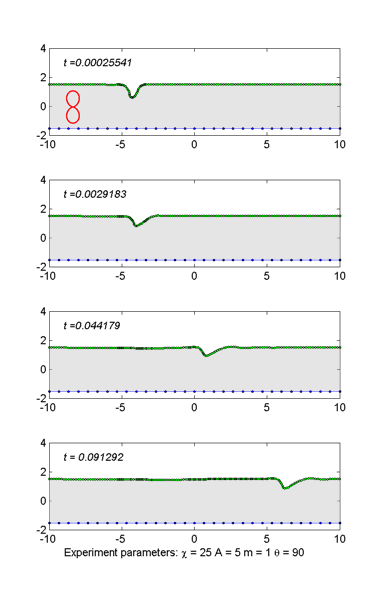 |
ELECTROMIGRATION INDUCED EDGE VOID DYNAMICS ON THE INTERCONNECT SURFACE Two Fold Crystal Symmetry, {110} Planes in FCC When the tilt angle changed to 90°, the edge-void changes its morphological evolution behavior totally, especially at low and moderate electron wind intensities. This is a typical and very unique regime as can be seen in Figure at which one observes the formation of a Solitary Wave by the transformation of the Gaussian shape into the wedge shape having sharp drop on leeside. This Solitary Wave, which is first time detected by us in computer simulation experiments, migrates towards the cathode edge with constant velocity without showing any indication of dispersion and dissipation of energy. At very high electron wind intensity regime, the morphological evolution of the edge-void becomes extremely interesting, namely: the edge void changes its shape into the wedge form similar to the case mentioned above. But now! It starts to emanate very small and rounded shape void from its leeward side. This EM induced tiny void starts to drift towards windward side, and passes its slowly dragging mother, and then continues in traveling in the direction of the cathode edge while tracing rather straight path. The rate of the overall processes is almost linearly depending on the diffusion anisotropy coefficient denoted by A in Ogurtani’s formula. |